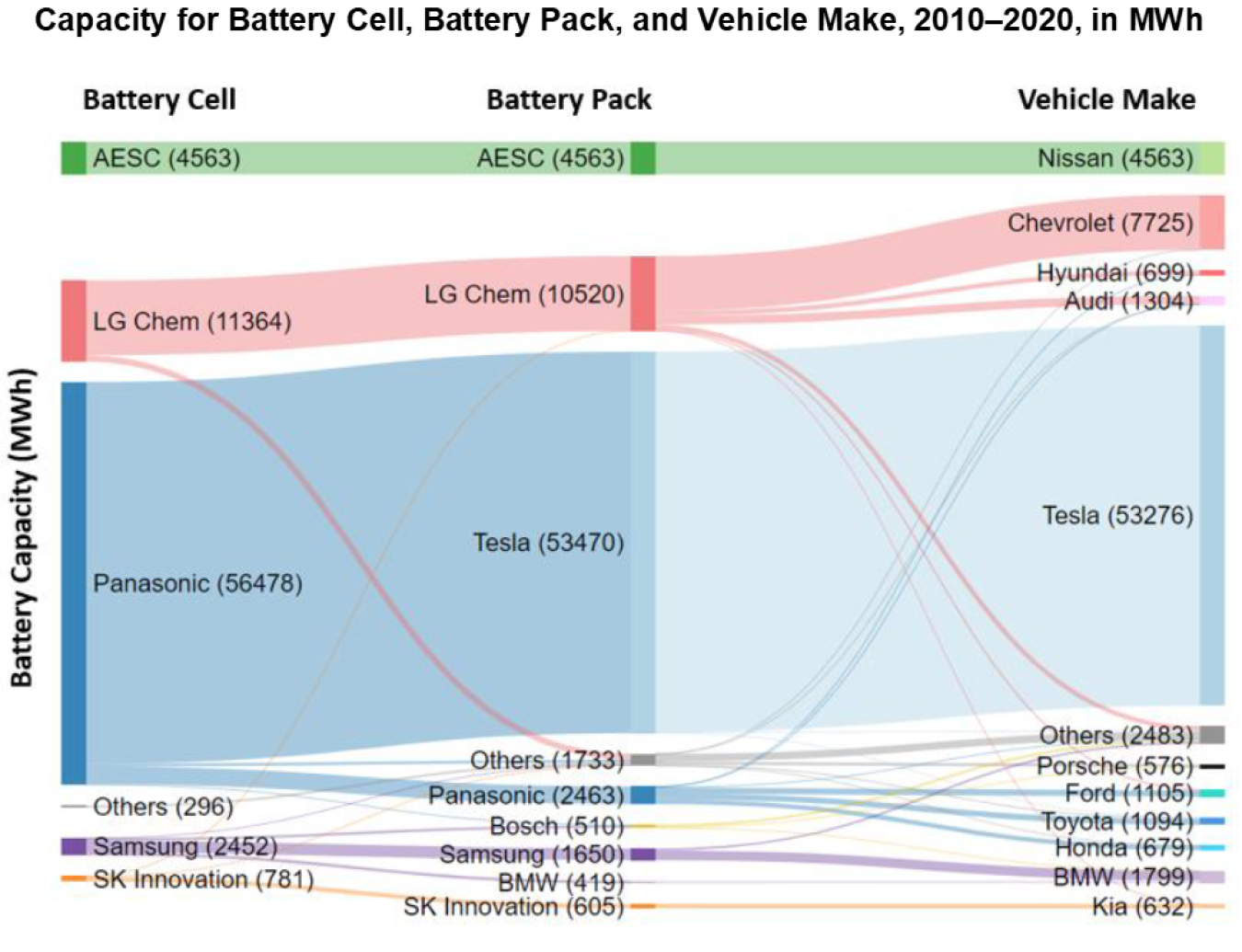Five companies (AESC, LG Chem, Panasonic, Samsung, and SK Innovation) produced almost all the battery cells used in plug-in vehicles for the U.S. market over the past decade, with capacity totaling 75,933 Megawatt-hours (MWh).
July 5, 2021Five companies (AESC, LG Chem, Panasonic, Samsung, and SK Innovation) produced almost all the battery cells used in plug-in vehicles for the U.S. market over the past decade, with capacity totaling 75,933 Megawatt-hours (MWh). Panasonic supplied 74% of all the cells, with a majority of those cells installed in Tesla battery packs for Tesla vehicles. A small percentage of Panasonic battery cells went into Panasonic battery packs that were installed in vehicles produced by Ford, Toyota, and Honda. LG Chem battery cells and battery packs primarily went into vehicles produced by Chevrolet, with smaller amounts going into Audi, Hyundai and other vehicle makes. All AESC cells and battery packs went into Nissan vehicles, making it the only cell manufacturer that supplied a single vehicle make.

Source: Yan Zhou, David Gohlke, Luke Rush, Jarod Kelly, and Qiang Dai (2021) Lithium-Ion Battery Supply Chain for E-Drive Vehicles in the United States: 2010–2020. Argonne National Laboratory ANL/ESD-21/3. Figure 2.7.

